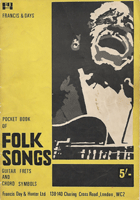
Here's a pseudo Santa using the tune to play the Ukulele Limerick about his elves.
Limericks are nonsense rhymes meant to be silly, amusing and often a bit raunchy.
The first, second, and fifth lines all rhyme with each other and may have between 7 and 10 syllables.
The shorter third and fourth lines also rhyme with each other and have 5 to 7 syllables.
Here's a popular and delightfully wacky example of a valid limerick:
A canner exceedingly canny [9 syllables]
One day remarked to his granny [8 syllables]
A canner can can [5 syllables]
Any thing that he can [6 syllables]
But a canner can't can a can can he? [10 syllables]
Do I have to stick exactly to these rules when composing a limerick?
A pedant might say so, but remember there is something called poetic licence.
Here's an anonymous, explicitly invalid, yet chucklesome limerick:
There was a young man from Japan
Whose limericks would never quite scan.
And when they asked why,
He said "I do try!
But when I get to the last line I try to fit in as many words as I can."
The Limericks on Page 1 were all written by Lord Dynamite.
Those on Page 2 were penned by Raftery the Poet.
"Lord Dynamite" is a pseudonym, as well as his anagramific name.
Is "anagramific" a real word?
It is now! 😀
Raftery the Poet has been writing and performing his own poetry for many a year.
You'll find his website at qi5.co.uk/rafterythepoet
All of Raftery's limericks mention a Yorkshire town or village.
Why waste your precious time writing these silly limericks?
They were written to help keep our chins up during the coronavirus pandemic.
But as Voltaire once said "Le sens commun n'est pas si commun" which means "Common sense is not so common."
This could be a more fitting answer to the question.
A scholarly French fellow, Voltaire
Had an intellect remarkably rare
But he was brought down to earth
By a femme of some girth
Who asked, “Monsieur, d'you like a good pair?”
Voltaire limerick by Raftery the Poet
What does "tambala" mean?
Totally Awesome Meanwood Ballad And Limerick Alliance.
Does this really exist?
Anything can exist in our dreams!

We are a cheery, plucky, upbeat group of ukeists who meet weekly in the Meanwood Institute, a meeting hall in the Meanwood district of Leeds. We play a smorgasbord of songs, do charity concerts in and around the Leeds area and are available for all sorts of other functions.

A minor 7 (or Am7) is properly pronounced "A minor seventh".
C major 6 (or C6) is "C major sixth".
The joke here is that these are the easiest chords to play on a ukulele. A two year old child running his or her fingers across the open strings of a uke would be playing Am7 or C6.
They're amusing, inspirational and brilliant! The Royal Conservatory of Music said, in February 2021, that their concerts are a "funny, virtuosic, twanging, awesome, foot-stomping obituary of rock-n-roll featuring the bonsai guitar".
You'll find their website at www.ukuleleorchestra.com